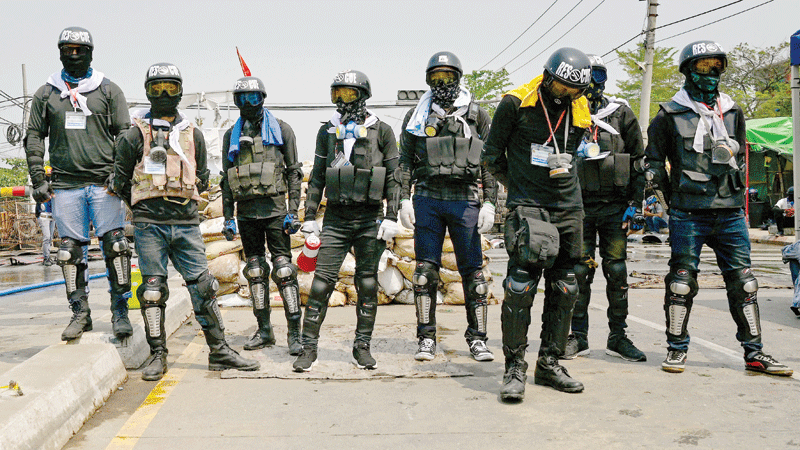

YANGON: At least seven protesters were killed on Wednesday as security forces used live ammunition on the 30th day of demonstrations against last month’s military coup, local media reported and witnesses claimed on social media.
Local media had multiple reports of security forces using force against protesters.
The Eleven Myanmar news portal tweeted reports of authorities using tear gas, flash grenades and rubber bullets against protesters in Yangon, the country’s largest city.
There were reports of police using live ammunition against the protesters, including unconfirmed reports of one young protester dead in the northern city of Myingyan.
Two other demonstrators, a 37-year-old man and a 19-year-old woman, died in the city of Mandalay, Myanmar Now reported.
Other media outlets said there had been four protester deaths in the city of Monywa, but no details were provided.
It is not known how many deaths have resulted from the clashes. On Sunday, there were reports of 18.
The UN Security Council has decided to discuss the matter, most likely in the form of a closed session on Friday. The decision comes amid appeals from inside Myanmar for the UN to send aid. Sources on the ground are referring to it as a “war zone.”
The deaths came as the leaders of the United States, India, Australia and Japan vowed to work together to restore democracy in the Southeast Asian nation.
More than 70 people have been killed in Myanmar in widespread protests against a February 1 coup by the military, the Assistance Association for Political Prisoners (AAPP) advocacy group has said.
Saturday’s protests erupted after posters spread on social media urging people to mark the death anniversary of Phone Maw, who was shot and killed by security forces in 1988 inside what was then known as the Rangoon Institute of Technology campus.
His shooting and that of another student who died a few weeks later sparked widespread protests against the military government known as the 8-8-88 campaign, because they peaked in August that year.
An estimated 3,000 people were killed when the army crushed the uprising, at the time the biggest challenge to military rule dating back to 1962.
Aung San Suu Kyi emerged as a democracy icon during the movement and was kept under house arrest for nearly two decades.
She was released in 2008 as the military began democratic reforms and her National League for Democracy won elections in 2015 and again in November last year. — Reuters
Oman Observer is now on the WhatsApp channel. Click here



